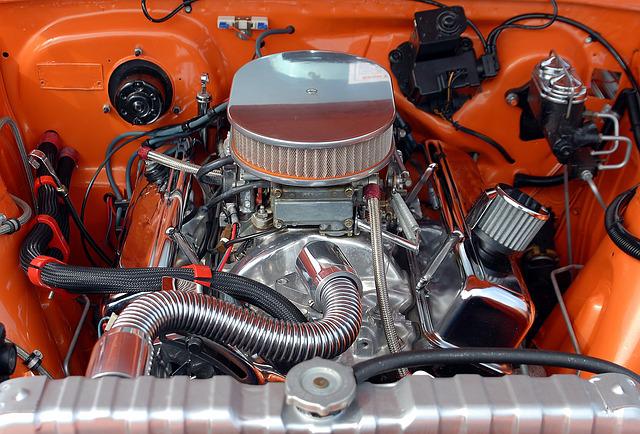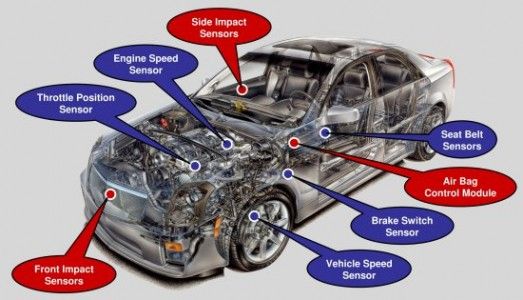
There are some parts of your vehicle that need to be replaced. Some of these parts are the starter motor, alternator, sensor, or actuator. If you know how to repair these parts, you can make the repairs yourself within a short period of time. Follow the instructions in your vehicle's manual to complete these repairs. Sometimes, tools may be necessary. You should read the instructions carefully to make sure you are following the correct steps. These repairs are easy to perform.
Check engine light
Don't ignore a Check Engine Light (CEL), if it is on in your car. While it may seem harmless, this warning light can actually lead to an expensive problem if not addressed correctly. This is especially true if it stays on the whole drive. This could signal a more serious issue that may lead to the car becoming stuck. Ultimately, you should have your car checked out by a certified service technician.

Headlights
Headlights are one of the most overlooked parts of a vehicle. The light bulbs inside of your vehicle's headlights can wear down over time. Replacing just one headlight bulb may result in an uneven field of vision, which can be distracting to the driver. An employee from a car maintenance shop can advise you on the best way to replace your bulb. These are some ways to take care of your headlights.
Tire pressure light
The time is right to get your tire pressure checked by a professional when you notice the light blinking on your dashboard. Although many people just fill their tires with air, there's a way to ensure your tires are at the correct pressure. Read the owner's manual for more information. Your vehicle's manufacturer recommended PSI can be found on the sticker placed inside the driver’s door jamb. If the light doesn't go out, check the air pressure of all tires to ensure that all tires are at the proper PSI.
Oil change
Regular oil changes are an important part in regular car maintenance. It not only increases the performance of your car but can also protect it against possible breakdowns. Different car models need different types of oil. It's important that you know which type is right for your vehicle. It will ensure that your car is properly maintained by having its oil changed by a professional.
Power steering fluid
Power steering fluid can become degraded over time, and may need to replaced. It is possible to check it, but only if you have time to examine your car. The dipstick might have "Min" or "Max" lines that indicate the proper levels. Then, simply wipe the excess fluid from the dipstick before reinserting it. This procedure may take a bit more time than you'd like, but it will help you ensure your steering works properly.

Tune-up
Although you might assume that your vehicle is in need of a tune up, there are several other important things that you should inspect. There are many hoses and belts in vehicles that could be damaged or need to be replaced. Technicians can inspect the brakes and replace rotors or pads as needed. If your car is experiencing prematurely falling apart, you may want to have it serviced. It could be a sign of alignment, balance, and rotation problems.
FAQ
How long is an apprenticeship for an automotive mechanic?
A three-year apprenticeship in automotive mechanics takes. It includes two years of school and two years as an apprentice. The first year is spent learning all aspects of the trade, including theory, practical skills, and safety procedures. This year, you will also learn how to safely and efficiently use tools. After completing the first year, you'll then spend another year on-the-job training where you'll gain experience in different areas of the trade. These years will offer you the opportunity to attend formal classes.
The final year is dedicated to earning certifications and qualifications in the field. These include NVQs. They are awarded after passing exams on specific topics within the industry. Additionally, HNCs are Higher National Certificates that cover general subjects such management, customer service, and business administration. For those interested in pursuing certain trades, City & Guilds certificates are available.
What can I do to fix my car as an hobby?
You might be interested in cars as a hobby. It is possible to learn about cars, repair them, purchase parts, or simply enjoy them. This would be a wonderful hobby if you're looking to find something completely different.
It isn't easy to turn it into a full time job. It takes dedication and hardwork. It will also require a large amount of investment.
You might not have a compelling reason to get involved in the car industry.
What are the basics of car mechanics?
You don't need to know anything about cars to work as an auto mechanic. You only need to know how to fix them. It's why many people begin to fix things by fitting brake pads or changing tires.
It is important to be able to read and understand diagrams as well as written instructions. You'll also need to be able to judge whether parts need replacing or repairing.
You should not attempt to fix vehicles without proper training and guidance. This is especially true if you deal with expensive components such as engines or transmissions.
Although you won't be required to know much about cars you should have a solid understanding of the fundamentals and principles of mechanical engineering. This includes understanding the mechanics of how engines and brakes work.
It is important to realize that you must be ready for all types of situations. For example, you may find yourself working on a vehicle that has been involved in a serious accident. You will also need to be able to deal with accidents and breakdowns.
You must also be willing to learn quickly. It is important to be able both to diagnose problems and perform simple maintenance tasks, such as tightening nuts.
What are the requirements of an automotive technician?
You need to have high school diploma or GED and good grades in English as well as maths. Also, you must be able read and write. Before you can start working, you will have to pass a written exam and take a series practical tests.
Statistics
- Apprentice mechanics earn significantly less hourly than mechanics who have completed training, with a median wage of approximately $14.50 an hour, according to PayScale. (jobhero.com)
- The U.S. Bureau of Labor Statistics (BLS) reports that the job outlook for automotive service technicians and mechanics is expected to decline by 4% from 2019 to 2029. (indeed.com)
- 52% of Mechanics in the United States think their salaries are enough for the cost of living in their area. (indeed.com)
External Links
How To
How to diagnose your vehicle properly for repair
To determine if your car needs repairs, you should first look at the symptoms that your car presents. These steps will help you diagnose your car properly.
-
Check engine lights. Make sure to check all dashboard indicators like the engine light indicator (oil pressure gauge), the battery indicator (battery light indicator), and the RPM indicator (rpm gauge). It could indicate that your vehicle is having problems.
-
Pay attention to the treads on your tires. Tire wear can lead to problems in handling and brake performance. You should also inspect the wheel treads. You should ensure that they are clean and smooth. You can do this by taking off the wheels. You can check the tread wear with a flashlight.
-
Observe the brake fluid level. It is important to keep track of how much brake fluid you have in your car. This will ensure your brakes function properly. Low brake fluid levels can cause brake failure when you apply pressure.
-
Check the suspension system. It is common for vehicles to have a suspension system which absorbs shocks or vibrations. It provides better control and allows smoother acceleration and deceleration. If your vehicle has a suspension problem, it might feel wobbly or shake uncontrollably. To test whether your vehicle has a suspension issue, try putting weight on the front or rear axle and observe the movement.
-
Examine the steering column. Steering columns are used to connect the steering wheel to the rest of the vehicle's components. Sometimes, steering columns are damaged by accidents. You should replace your steering column if it feels loose or unstable.
-
Observe the exhaust pipe. Exhaust pipes move gases from combustion chamber to atmosphere. If your exhaust pipe leaks or cracks, it will allow harmful fumes into your cabin. Also, if your tailpipe is bent, you should fix it immediately.
-
Take a look under your hood. Take a look underneath the hood to find any strange or unusual items. Leakage of fluids in your engine could indicate that it is leaking. In addition, if you notice an unusual smell coming from your engine compartment, you should contact a professional technician.
-
It is important to inspect the air filter. The outside environment can collect dust and other debris in your vehicle's air filters. A dirty filter can lead to a poor vehicle's performance. Replace your air filter regularly.
-
Check the fan belt. The fan belt is the link between the engine and the transmission. If the fan belt is damaged, the engine won’t turn. Replacing the belt is simple. All you need are a screwdriver & pliers.
-
You should inspect the radiator and hoses. The radiator hose is used to carry water from the radiator to your engine. If the hose becomes damaged or cracked, hot liquid can be emitted onto the engine. To repair the hose, you will only need to use a pair needle-nosepliers and a wire brush.
-
You should inspect the windshield wipers. Windshield wipers use electricity to wipe away rain and snow. If they stop working, streaks could be left on your glass. You can fix the problem by changing the washer fluid.
-
Check the battery cables. The battery cables provide power for the electrical systems in your car. Make sure you disconnect the negative cable before replacing batteries. Failure to do so can damage your alternator.
-
You should check the headlights. Headlights help you see the road ahead. It can lead to poor visibility if they aren't working properly. To check if the bulbs have gone out, you can inspect them.
-
Pay attention to the lights. If you approach other drivers at night, lights will warn them. If one doesn't work, it could distract you and lead to an accident.
-
Inspect your brakes. Before you get in a car accident, your brakes will be slowing down your vehicle. You could lose control of the car and cause a crash if they don't work properly.
-
Change the oil. Oil keeps your engine lubricated. This oil helps to prevent metal parts becoming too worn out. Changing the oil every month is recommended.